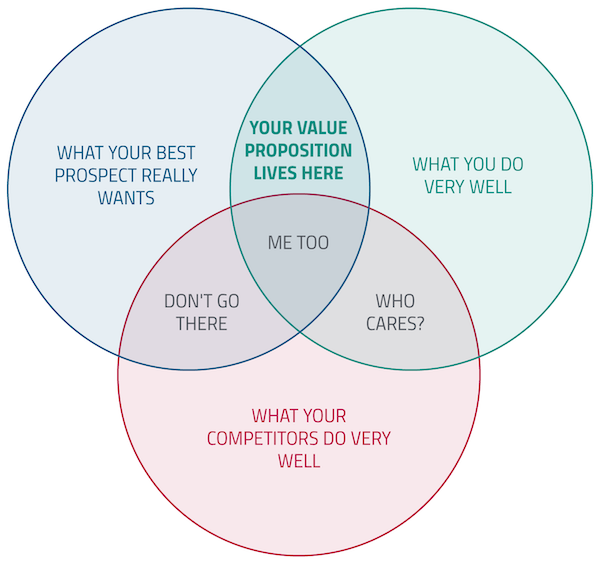Value is the focus of an “outside-in” oriented organization focused on solving problems. Here Amy Wedeking Shannon, President and Principal Consultant at CaliberOne Solutions, helps us consider the features, benefits and value proposition: What’s the Difference and Why Does It Matter to Clinical Simulation? This common business practice can help your healthcare simulation program find new ways at providing better service to internal stakeholders and external clients, improving learning and training outcomes and increasing Return-on-Investment (ROI). Read Amy’s article below to learn how!
Features, benefits and value proposition. What’s the difference and why does it matter? From Amy Wedeking Shannon
The difference between these things goes far beyond a market messaging exercise; it goes to the core of who an organization is. It has been my experience that value is the focus of “Outside-In” oriented organizations, those that are focused on solving customer problems and features are the focus of “Inside-Out” oriented organizations.
“Superior customer value is the “true north” of an outside-in strategy. “It is a centering concept that keeps the whole organization focused on what matters” asserts George Day and Christine Moorman in Strategy from the Outside In. Peter Drucker taught that “It is the prospect of providing a customer with value that gives the corporation purpose, and it is the satisfaction of the customer’s requirements that gives it results.” To create results, a focus on customer value must truly penetrate an organization; it must be part of the fabric of its culture.
In the world of medical simulation, design teams can be Inside-Out oriented. After all, their clinicians and technicians have applied their ingenuity to the development of new, cool and life-like features. They may have poured tremendous investment of thought, time and money into bringing their idea forward. The natural tendency is to showcase the intricacies of such products and solutions. They frequently share these innovations with their circle of colleagues, who also appreciate their creation. Innovators and even early adopters, as described by Geoffrey Moore, are excited to apply the newest approach; the team sees initial excitement around their idea. They start showcasing their new simulator at industry events, but adoption is slow. What happened?
They have spent their development and messaging efforts focused on the features of their solution, they may even translate that feature into the benefit of education, but have not stopped to truly listen and understand their customer’s problem, how their solution addresses that problem, the differential value of that solution as compared to alternative approaches and the concrete outcome of applying that solution (the So What?).
In Medical Simulation, it’s also critical to assess who is your customer and align the value proposition with the target audience. Is your customer the learner who first values the effectiveness of patient care? Is your customer the clinical department lead who values the consistent implementation of evidence-based medicine? Is it the instructor who values the feedback from class participants? Is it the financial decision maker that cares about the impact on the incidence of Never Events, readmissions or length of stay that ultimately drives cost?
“Outside-in organizations,” as described by Day and Moorman, start with the market to design their strategy, use deep market insights to inform and guide their decisions and every part of the organization is focused on “achieving, sustaining, and profiting from customer value.” They utilize their first few clients to intentionally listen to customer voices and to refine their technical, operational and messaging approaches. As they move from selling to the market innovators to the market majority, they clearly articulate well-defined value to clients: what’s in it for them.
A medical simulation design team might start by assessing a particular clinical challenge that drives up mortality, morbidity, and cost and then considering how they can apply their core competencies to address this challenge.
Are you an “Outside-In” or “Inside-Out” organization? Are you truly seeing past your own reflection?
CaliberOne Solutions represents the intersection between strategy, consultative sales, and marketing that is necessary to identify and create new markets and new market extensions, expand market penetration, create the “whole product solution,” and build collaborative business to business partnerships.
Further Reading on HealthySimulation.com:
- How to Pick Key Performance Indicators (KPIs) that Optimize Healthcare Simulation Outcomes
- ROI Framework for Healthcare Simulation
- Exploring the Value ROI of Healthcare Simulation From Jump Simulation & Education Center
- 7 Steps to Make the Business Case for Healthcare Simulation
Have a story to share with the global healthcare simulation community? Submit your simulation news and resources here!








